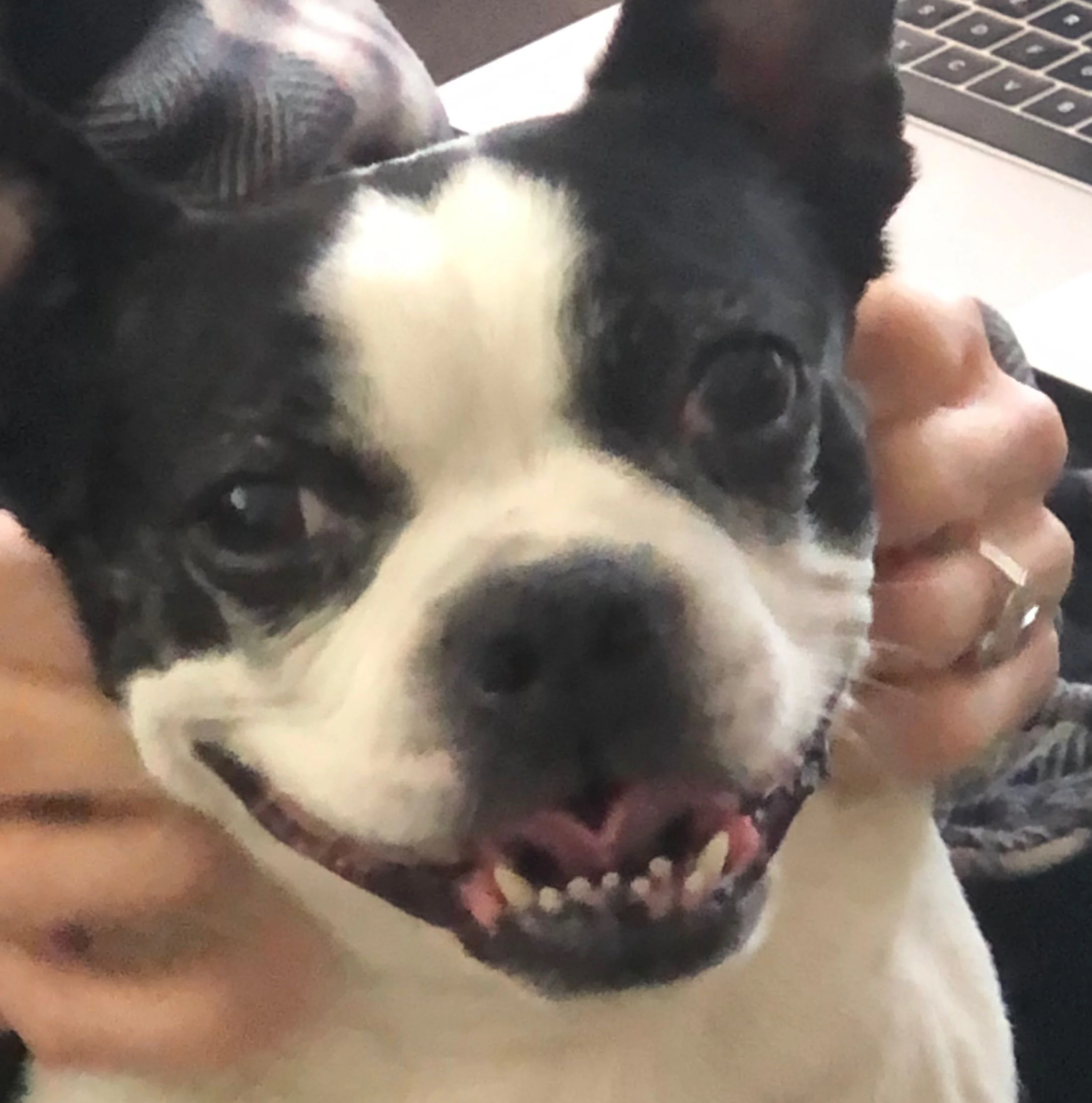Last Thursday, I drove our Boston terrier, Lilly, to her wellness re-check at the veterinary ER I first took her to the previous week.
Rain pattered the windshield as our car swished south on Interstate 5. Lilly sat calmly in the passenger seat. Her head — ensconced in an Elizabethan cone she’d worn for one week — draped lazily over the edge of her bed. She’d tossed fitfully during those first few nights with the cone in place. But each night she settled in a little quicker. On the fourth night, she fell asleep before we did.
Beethoven commanded the airwaves while Lilly licked a swirl of dried turkey and chicken soup from the funnel of clear plastic. Since she’d not been able to access her feeding bowls, my wife, Susan, and I had been hand-feeding her. We used the inverted top of a sugar bowl or a collapsible silicone cup that fit inside the cone. Initially, she refused everything. Gradually, she brought her belly to the bar.
As she lapped up her day-seven breakfast, we could no longer see the sore inside her right lower lip. Topical antibiotics had tamed the angry sea anemone latched there, retracted its red tentacles and cooled them to the color of her lips. I was hopeful. This could be the day her cone was removed.
A passing semi’s tires whipped a wave at our car. I engaged the wipers. Lilly flipped onto her back, offering me her belly. She did this for the first time with the cone in place the night before. I ran my fingers through her short chest hairs. She sighed. Lilly’d adapted to her cone in other ways. She wasn’t clipping corners or snagging the lip of the cone on steep stairs nearly as much as that first day. On the morning we made our return trip to the vet, she jumped in the front seat by herself.
Parked in the lot, I called to check Lilly into the ER clinic. She was again reluctant to leave her daddy’s side. An hour later, a cone-less and jubilant Lilly was returned with discharge instructions. Her sore had healed.
On the car ride home, patches of blue fought through the grey cumulus. Panting, Lilly sat up and swiveled her head, her lips fully retracted. I called Susan and shared the news. Yes, we were ecstatic that Lilly was freed from her Hannibal Lecter headdress. But I was more proud than happy for the ways Lilly had soldiered through her ordeal.
Susan and I knew that Lilly’s cone would eventually be removed, but she didn’t know. We had no way to convey such complex information to her. For all Lilly knew, living with her head ensconced in a plastic radar dish was her new normal. It was hard to imagine Lilly leaden with the cone for another week or more. But she’d provided ample evidence of her ability to adapt. Bits of her irrepressible personality had reemerged during the final day.
Someday, Susan and I may face new normals. Birdsong may fade into the rustle of leaves. We may wake to a hitch in our step. Words and phrases may recede out of reach. We may see these changes coming. We may not. They may be permanent. Or not.
Either way, we’ll have known a fellow traveller who lit our way to adapt.

